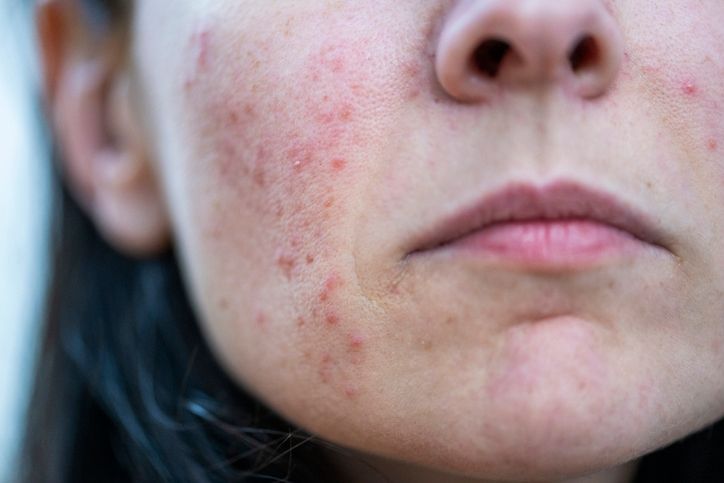Author: Natalie Ng|Updated: 29 April 2025
Your skin type matters a lot when choosing between anti-aging creams and serums. If you have dry or dehydrated skin, creams usually work better. They help by locking in moisture and protecting your skin’s surface. But if you have oily skin or combination skin, serums may be the better option. They’re lightweight, absorb quickly, and don’t leave a greasy residue. Anti-aging creams are thicker and generally oil-based. They’re great at hydrating and improving skin texture. On the other hand, serums contain a higher concentration of active ingredients like retinol, vitamin C, and hyaluronic acid. These ingredients help with fine lines, dark spots, and uneven skin tone by working deeper within the skin. Choosing the right one depends on your specific skin concern and your daily skincare routine. Whether you’re dealing with sensitive skin, aging, or moisture loss, understanding the basics will help you pick the right product for your skincare plan. Keep reading to learn how serums and creams compare when it comes to common skin issues like wrinkles, acne, and dullness.

The Basic Science Behind Anti-Aging Creams and Serums
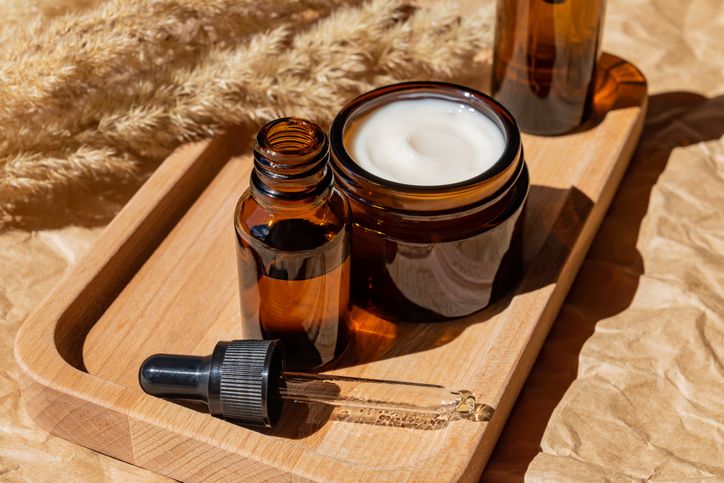
How Anti-Aging Creams Work
Anti-aging creams are thicker and generally oil based. They use larger molecules that stay closer to the skin's surface. These creams often contain thickening agents and moisturizers that reduce moisture loss and improve the appearance of fine lines and wrinkles. They’re especially helpful for dry skin, dehydrated skin, or anyone looking to strengthen the skin barrier.
Creams often include retinol, vitamin C, hyaluronic acid, and alpha hydroxy acids, but in lower concentrations than serums. Their main job is to hydrate and protect while slowly delivering ingredients that support collagen production and cell turnover.
How Anti-Aging Serums Work
Face serums are lightweight and absorb quickly. They use smaller molecules, so they penetrate deep into the skin. Most anti-aging serums have a higher concentration of active ingredients that target specific skin concerns like fine lines, dark spots, uneven skin tone, and dull texture.
A retinol serum or a brightening serum with vitamin C works well for treating fine lines wrinkles or improving skin health. Since serums don’t include as many moisturizing ingredients, they’re a better fit for oily skin or people who want to avoid a greasy residue.
Using Both in Your Skincare Routine
You don’t have to choose just one. Many people use both serums and creams in their daily skincare routine. A thin layer of serum goes on first to address specific concerns, followed by a cream to lock in moisture and support the skin’s surface.
Knowing how these skincare products work gives you a better idea of how to build a skincare plan that matches your needs. Keep reading to learn how to match the right product to your skin type and skin concerns.

Texture and Consistency: Understanding the Key Differences

How Creams Feel on the Skin
Anti-aging creams are dense and rich. They have a butter-like consistency that sits on the skin's surface and creates a barrier to prevent moisture loss. This texture works especially well for dry skin or mature skin that needs long-lasting hydration. Many night creams fall into this category because their thicker texture supports the skin overnight when moisture levels tend to drop.
Due to the generally oil based structure of creams, they may not suit those with oily skin or those who prefer products that absorb quickly. Creams often contain thickening agents and fewer moisturizing ingredients than serums by concentration, but their occlusive nature makes them ideal for sealing in hydration and protecting the skin's surface from environmental stress.
How Serums Feel on the Skin
Serums are water-based and lightweight. They absorb quickly and don’t leave a greasy residue, making them suitable for oily or combination skin. Their thin consistency allows for a thin layer application that won’t interfere with makeup or other products in your daily skincare routine.
The fast-absorbing nature of serums helps active ingredients like vitamin C, retinol, or hyaluronic acid reach deeper skin layers. This deeper absorption supports improvements in fine lines, uneven skin tone, and skin texture, especially when used consistently in a targeted skincare routine.
When to Use Creams vs. Serums Based on Texture
The thickness of creams makes them better suited for nighttime routines, especially if you're trying to treat dehydrated skin or protect against moisture loss. Serums, because of their lighter texture, work well during the day under makeup or sunscreen, or layered with other skincare products to target specific concerns like dark spots, wrinkles, or acne.
Read More
Book Now to Experience
Acne Treatment
1 Minute Self-Registration
Date should not be before minimal date

Active Ingredient Absorption and Penetration
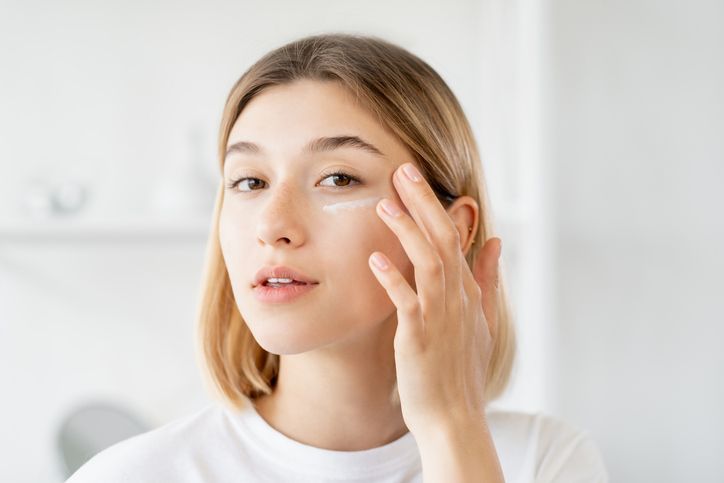
Why Serums Absorb Faster
Serums contain smaller molecules and minimal filler ingredients. This allows them to penetrate deep into the skin, reaching layers that creams typically don’t. Because they skip heavier moisturizing agents and thickening agents, serums can deliver active ingredients like retinol, vitamin C, and peptides directly to the areas that need them most.
This makes serums ideal for treating specific skin concerns such as fine lines, uneven skin tone, dark spots, and dull texture. The high concentration of actives in serums means even a thin layer can be effective. If your goal is visible results for aging signs or targeted treatment, serums are often the better option.
How Creams Work on the Surface
Anti-aging creams are designed to work more on the skin’s surface. Their thicker texture and emollient ingredients create a barrier that slows down water loss, which is essential for maintaining hydration, especially in dehydrated skin. While this barrier can reduce how quickly active ingredients absorb, it also helps protect skin and lock in benefits from other products, such as serums used beforehand.
Creams still contain active ingredients, but they work more gradually. Many retinol creams, for example, are formulated with lower concentrations to reduce irritation and work gently over time. This makes them suitable for sensitive or dry skin types needing slow, steady improvement.
Using Both for Maximum Effect
Using both a serum and a cream in your skincare routine can help you get the best results. Apply your face serum first to target your specific concerns, then layer a moisturizer or anti-aging cream on top to hold in hydration and protect your skin’s barrier.
This combination helps improve skin health over time by addressing issues at both the surface and deeper levels. K

Choosing Between Cream and Serum for Dry Skin
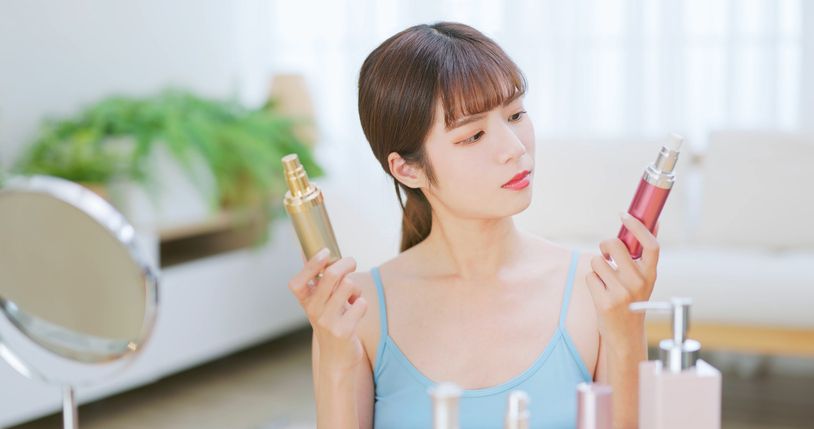
Why Creams Are Essential for Dry Skin
Dry or dehydrated skin lacks the moisture needed to maintain a strong barrier. Anti-aging creams help by forming a protective layer that seals in hydration and slows down moisture loss. Their rich texture works especially well in colder months or dry climates, when the skin needs extra support to stay comfortable and healthy.
Look for creams that include hyaluronic acid, ceramides, and natural oils. These ingredients help maintain long-term hydration, reduce fine lines, and improve skin texture. If you're dealing with rough patches, tightness, or flaking, a well-formulated cream can significantly improve how your skin feels and looks.
How Serums Support Dry Skin
Serums aren’t a replacement for creams, but they add value by delivering a higher concentration of active ingredients deeper into the skin. A retinol serum or a vitamin C serum can help boost collagen production, target dark spots, and improve overall tone. But on their own, serums may not give enough hydration to support dry skin.
That’s why layering is key: apply a serum first, then seal it in with a cream. This way, you treat deeper layers with actives and protect the surface with moisture.
Adjusting Based on Season or Severity
Dry skin may need different products depending on the time of year. In winter, a thick cream layered over a hydrating serum helps prevent cracks and irritation. In summer, a lightweight serum under a basic moisturizer may be enough to maintain balance without feeling too heavy.
If your dryness is severe, avoid serums that include alcohol or strong acids without pairing them with a soothing cream. Focus on skincare products that support skin barrier health and reduce irritation while still delivering anti-aging benefits.
Book Now to Experience
Acne Treatment
1 Minute Self-Registration
Date should not be before minimal date

Best Options for Oily and Combination Skin Types

Why Serums Work Well for Oily Skin
Oily skin produces excess sebum, which can clog pores and lead to acne or a shiny appearance. Anti-aging serums are usually water-based and absorb quickly, making them ideal for oily skin. They deliver active ingredients without adding weight or creating a greasy residue.
Look for serums with niacinamide, retinol, or salicylic acid. These ingredients help regulate oil, reduce fine lines, and improve skin texture. Because serums don’t sit heavily on the surface, they won’t block pores or interfere with your skin’s natural balance.
Managing Combination Skin with Targeted Products
Combination skin means different areas of your face need different care—often an oily T-zone with dry cheeks. In this case, flexible layering is key. You can apply a lightweight serum all over to target signs of aging, and then use a moisturizer or cream only on drier areas.
If your routine needs more balance, consider gel-creams or hybrid formulas that offer hydration without heaviness. These work well if your skin changes with the weather or hormones.
Comparison Table: Product Types and Their Best Use
| Product Type | Benefits | Best For |
|---|---|---|
| Water-based Serum | Fast absorption, lightweight | Oily T-zone |
| Gel-cream | Oil control, hydration | Combination skin |
| Oil-free Cream | Moisture without grease | Dry patches |
| Hybrid Formula | Balance, versatility | Mixed skin concerns |
Choosing the right product depends on where and how your skin behaves. You might need to test different combinations to find what keeps your skin clear and balanced while still treating fine lines, uneven skin tone, or other skin issues.

Anti-Aging Solutions for Sensitive Skin
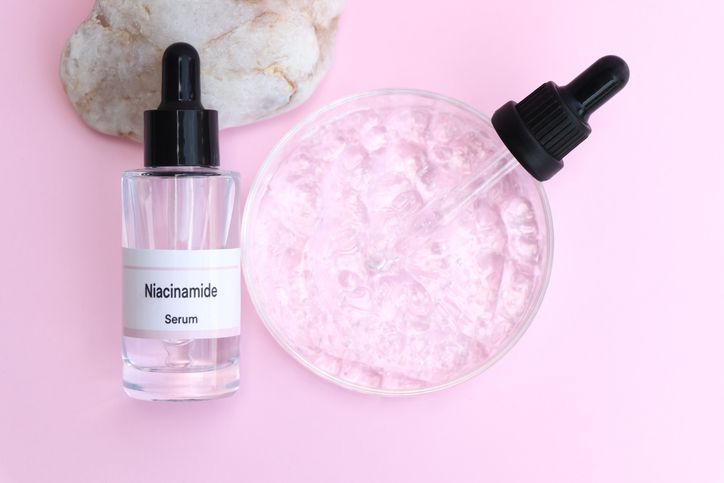
Why Sensitive Skin Needs Special Attention
Sensitive skin reacts easily to new products, especially those with strong active ingredients. This makes choosing the right anti-aging cream or serum more challenging. Redness, stinging, or dryness can happen if a product is too harsh or contains known irritants like fragrance, alcohol, or strong exfoliants.
Serums are often a better starting point for sensitive skin because they are water-based, contain fewer thickening agents, and tend to be formulated with fewer overall ingredients. Still, not all serums are safe—some include high levels of retinol or acids that can irritate your skin if not balanced properly.
Ingredients That Work Well for Sensitive Skin
When choosing skincare products for sensitive types, focus on calming and non-irritating ingredients that still support anti-aging goals:
• Niacinamide: A form of vitamin B3 that reduces inflammation and supports the skin barrier without causing irritation
• Peptides: Help with collagen production and skin firmness without triggering sensitivity
• Ceramides: Strengthen the skin barrier and reduce water loss, which is essential for soothing reactive skin
• Hyaluronic acid: Hydrates deeply and gently, helping to plump fine lines without any harsh effect
These ingredients are often found in both serums and creams designed specifically for sensitive skin. Choose formulas labeled as "fragrance-free" and avoid anything with alcohol or essential oils, which can increase your risk of irritation.
Safe Usage Tips
• Always do a patch test on your inner arm before trying a new product on your face
• Use one new product at a time to track how your skin reacts
• Pair a gentle serum with a fragrance-free moisturizer to support the skin barrier while delivering anti-aging benefits
Sensitive skin can still benefit from anti aging serums and retinol creams, as long as they’re formulated correctly and introduced gradually.
Book Now to Experience
Acne Treatment
1 Minute Self-Registration
Date should not be before minimal date

Layering Techniques and Product Compatibility
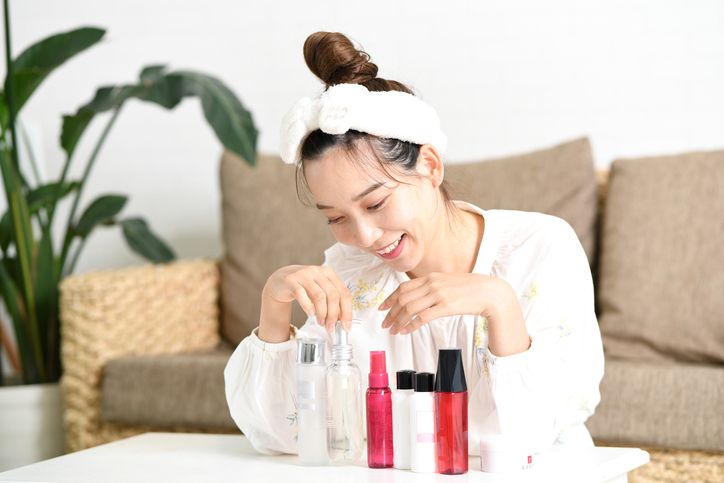
The Right Order Matters
To get the most out of your anti-aging products, apply them in the right order. The general rule is simple: start with the lightest texture and move to the thickest. That means serums go first, followed by creams or moisturizers.
Apply your face serum to clean, slightly damp skin. Wait about 30 to 60 seconds for it to absorb. Then follow up with your anti-aging cream. This process helps seal in the serum’s active ingredients, prevents moisture loss, and improves overall skin health.
How to Layer Multiple Products
If you use more than one serum, layer them from water-based to oil-based. For example, apply a vitamin C serum first in the morning, then layer a hydrating serum like hyaluronic acid if needed. At night, apply a retinol serum followed by a calming or barrier-repair cream.
Don’t apply conflicting actives together in the same step. Mixing retinol and vitamin C can cause irritation or reduce their effects. Instead, use vitamin C in the morning and retinol at night. This separation supports cell turnover and collagen production without overwhelming your skin.
Combining Key Ingredients Safely
Here’s a simple compatibility guide for common anti-aging ingredients:
• Vitamin C + Hyaluronic Acid → Yes (morning)
• Retinol + Peptides → Yes (night)
• Niacinamide + Retinol → Yes (calms irritation)
• Vitamin C + Retinol → No (use at different times)
• Alpha Hydroxy Acids + Retinol → No (may increase sensitivity)
Use brightening serums, retinol creams, and other skincare products on separate days if you notice irritation. Some ingredients work better when layered; others are best used alone.
Proper layering helps your daily skincare routine stay effective and safe, especially if you have sensitive skin or are using multiple treatments.

Common Myths About Anti-Aging Formulations

Myth 1: Serums Are Always Better Than Creams
It’s common to hear that serums are more effective than creams, but this depends on your skin type, goals, and the specific active ingredients you're using. Serums work well for targeting specific concerns because of their higher concentration and ability to penetrate deep into the skin. But that doesn’t mean creams are less important. Creams provide moisture, prevent moisture loss, and protect the skin’s surface, which is essential for maintaining healthy skin—especially for dry or dehydrated skin.
Both product types serve different purposes. Choosing one over the other without understanding your skin’s needs can limit your results.
Myth 2: Expensive Products Work Better
Price isn’t a reliable way to measure performance. Some anti-aging creams and serums are expensive because of packaging or branding, not ingredient quality. What matters most is the formulation and how well it matches your specific skin concern. A well-formulated retinol serum or vitamin C product at a mid-range price can perform just as well—or better—than high-end options if it includes the right key ingredients in the right concentrations.
Focus on ingredient lists and product reviews over brand names or price tags.
Myth 3: Anti-Aging Should Start in Your 30s
You don’t need to wait for signs of aging to start an anti-aging skincare routine. Supporting your skin with gentle products in your 20s—especially sunscreen, moisturizers, and antioxidants like vitamin C—can help delay visible signs like fine lines, wrinkles, and dark spots. This doesn’t mean using strong retinol early on, but preventive care plays a major role in long-term skin health.
Starting early with simple, supportive ingredients helps maintain a more youthful appearance over time.
Myth 4: Natural Ingredients Are Always Safer
Some assume “natural” ingredients are always better or safer, but this isn’t true. Both natural and synthetic ingredients can cause irritation, especially if you have sensitive skin. For example, essential oils and citrus extracts—often marketed as natural—can trigger inflammation. Meanwhile, lab-made ingredients like niacinamide or peptides are stable, effective, and safe for most skin types.
Instead of focusing on whether an ingredient is natural, look at its function, concentration, and how your skin responds to it.
Clearing up these myths helps you make better choices and avoid unnecessary irritation or wasted time. With a clear understanding of what serums and creams actually do, you can build a skincare plan that’s based on facts—not hype.

Boosting Results: How Acne Treatment Complements Your Anti-Aging Routine
While choosing between anti aging creams vs serum plays a big role in managing skin concerns, professional treatments can take your routine further—especially if you’re dealing with acne, acne scarring, or textured skin alongside signs of aging like fine lines, uneven skin tone, and dullness.
How the Acne Treatment Works
New Beauty’s Acne Treatment combines dual spiral suction with drainage technology to deep-cleanse the skin and unclog pores. It works by removing dead skin cells, oil, dirt, and bacteria from the skin’s surface. Once the skin is clear, a medical-grade hydrating serum is infused into the deeper layers. This not only hydrates but also supports collagen production and cell turnover, helping to reduce the appearance of acne scars, improve skin texture, and calm active breakouts.
Why It Enhances Anti-Aging Products
When your skin is clogged or inflamed, active ingredients in your retinol creams or anti aging serum can’t work effectively. This treatment helps clear the skin, making it more receptive to skincare products like vitamin C, hyaluronic acid, and peptides. By improving the skin’s ability to absorb and retain moisture, it supports the work of both serums and creams, especially in areas affected by acne or dehydrated skin.
Advantages of Adding Acne Treatment to Your Skincare Plan
• Clears out impurities and prepares skin for better product absorption
• Reduces sebum production, helping prevent new breakouts
• Promotes smoother, brighter skin by stimulating collagen
• Soothes redness and irritation with a hydrating serum
• Non-invasive and suitable for sensitive skin, oily skin, and combination skin
If you’re looking to reduce wrinkles, improve skin health, and treat specific concerns like acne or dark spots, this treatment can support your entire skincare routine—especially when used alongside the right face creams or face serums.
Book your Acne Treatment today to maximise the benefits of your anti-aging products and reveal clearer, smoother skin.
New Beauty's Acne TreatmentBook Now to Experience
Acne Treatment
1 Minute Self-Registration
Date should not be before minimal date
FAQ
Can Anti-Aging Products Make Wrinkles Worse if You Stop Using Them?
When you stop using anti-aging products, your skin won't suddenly develop more wrinkles, but it may appear worse temporarily. That's because these products often contain hydrating ingredients and exfoliants that improve skin's appearance while in use. Once you discontinue them, your skin returns to its natural state and aging process, which can make wrinkles seem more noticeable compared to when you were using the products.
How Long Before You Start Seeing Results From Anti-Aging Products?
You'll typically start seeing initial results from anti-aging products within 4-8 weeks of consistent use. However, significant improvements in fine lines and wrinkles usually take 3-6 months to become visible. For the best results, you'll need to use your products twice daily and protect your skin from sun damage. Remember that individual results vary based on your skin type, product quality, and lifestyle factors.
Are Drugstore Anti-Aging Products as Effective as Luxury Brands?
Many drugstore anti-aging products can be just as effective as luxury brands since they often contain similar active ingredients. You'll find that ingredients like retinol, peptides, and hyaluronic acid work the same way regardless of price point. What you're paying for with luxury brands is usually fancy packaging, marketing, and additional ingredients like fragrances. Focus on reading ingredient lists rather than brand names to make smart skincare choices.
Should You Start Using Anti-Aging Products in Your Twenties?
Starting anti-aging products in your twenties is a smart preventive strategy. Your skin begins losing collagen around age 25, so it's ideal to start early. Focus on sunscreen, retinol, and antioxidants to protect and maintain your skin's health. You'll thank yourself later, as prevention is much easier than correction when it comes to aging signs.
Can Anti-Aging Products Cause Breakouts During the First Few Weeks?
Yes, you might experience breakouts when first using anti-aging products. This reaction, known as purging, typically happens because these products contain active ingredients like retinoids or acids that speed up cell turnover. Don't worry - it's usually temporary and lasts 4-6 weeks. If breakouts persist beyond this period or cause severe irritation, you'll want to consult a dermatologist or switch products.
Recommended Articles
COPYRIGHT© NEW BEAUTY MANAGEMENT LIMITED 2025. ALL RIGHT RESERVED.

